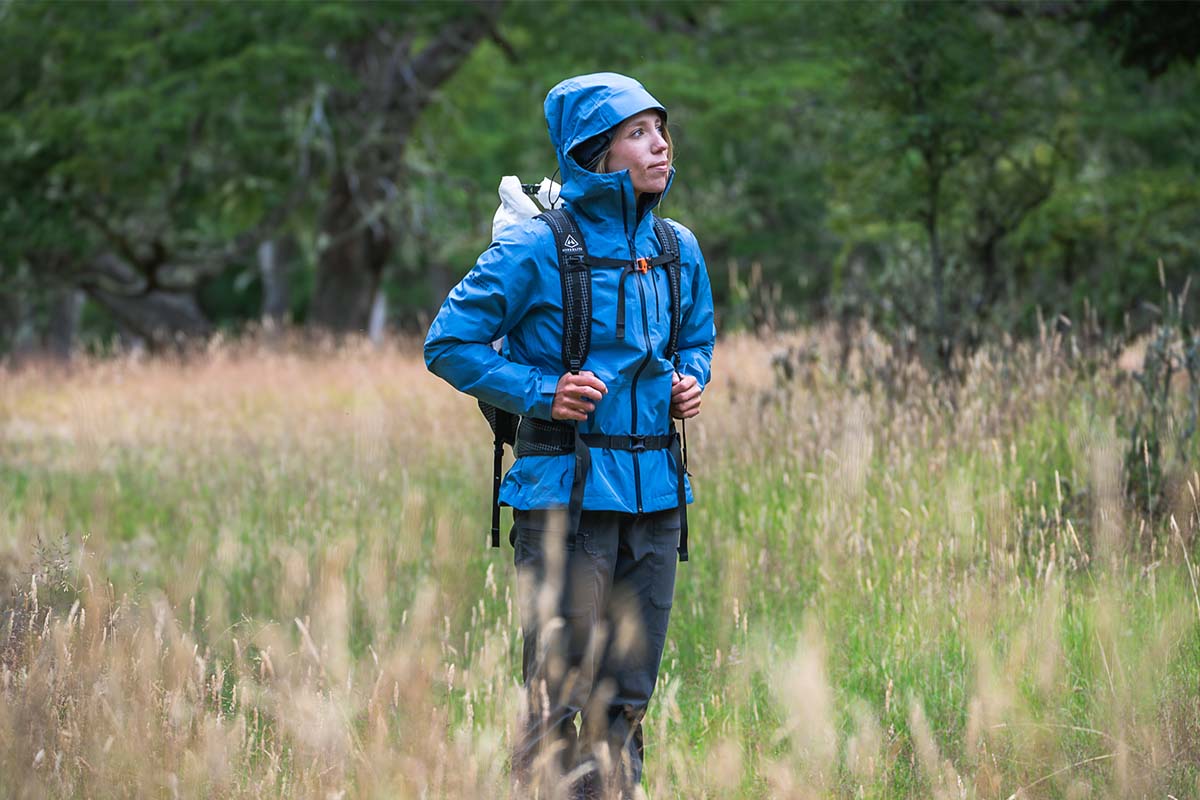
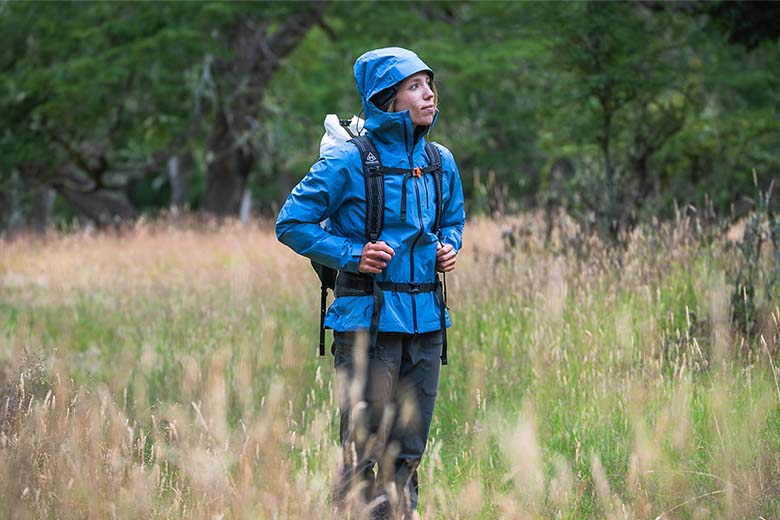
Price: $225
Weight: 11.7 oz.
Waterproofing: 2L Gore-Tex Paclite
What we like: Supple and durable shell, quality Gore-Tex membrane, and hip-to-bicep venting for those who run warm.
What we don’t: TorsoFlo vents are a polarizing feature; fit is noticeably boxy.
See the Women's OR Aspire II GTX See the Men's OR Foray II GTX
There’s no shortage of rain jackets to choose from, but the Outdoor Research women’s Aspire II (and men’s Foray II) is far and away one of our favorite designs. With a relatively thick face fabric and premium touches like Gore-Tex Paclite waterproofing and YKK Aquaguard zippers, this do-it-all shell offers a step up from most of the competition in terms of durability and protection. And to set the Aspire apart, OR tacks on their signature TorsoFlo vents, which run from bicep to hem and provide maximum ventilation for activities like hiking and spring skiing. Below we break down our experiences with the Aspire II. To see how it stacks up to the competition, check out our article on the best women's rain jackets.
Editor's note: Our review below covers the 2-layer Aspire, and OR recently released a more premium 3-layer version that uses the brand's in-house AscentShell membrane. We'll be testing the newer model on a backpacking trip this fall and will report back on its performance. In the meantime, the 2-layer Aspire is still widely available and will save you around $25.
Rain jackets run the gamut from affordable nylon designs with a simple, durable water-repellent (DWR) finish to hardwearing shells with Gore-Tex waterproofing. The Outdoor Research Aspire II GTX falls near the premium end of the spectrum, with Gore's 2-layer Paclite membrane and a thicker-than-average 50-denier (D) shell. You also get a DWR coating that effectively sheds light moisture, a tall collar with a three-way adjustable hood, and a fully seam-taped interior. To top it off, YKK Aquaguard watertight zippers add a nice performance slant and round out the sleek-looking design. We do have slight hesitations about the Aspire’s polyester build, which tends to absorb water more readily than nylon and led to some wetting out during our testing (although importantly, the Gore-Tex membrane still provided a defense). But the Aspire is an excellent option for light to moderate precipitation, and its thicker construction even makes it viable for winter days on the town or the occasional mild-weather ski tour.
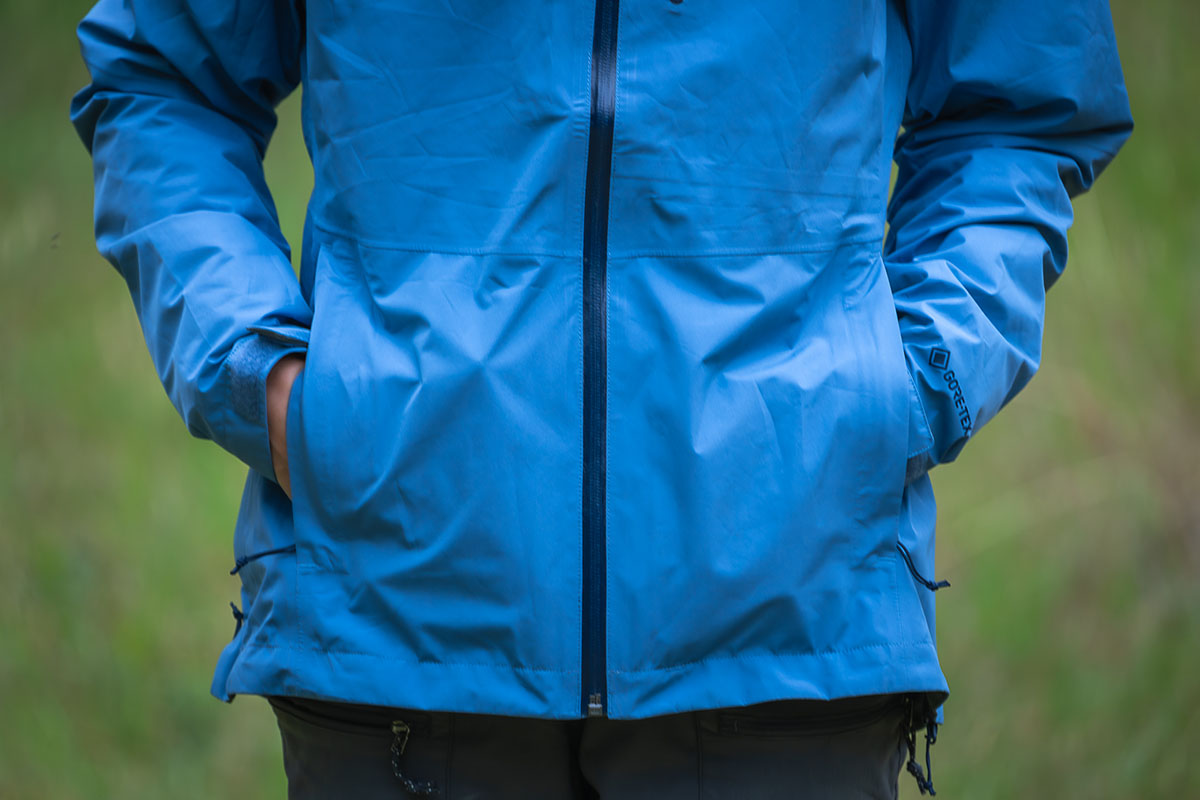
The rest of the Aspire II’s feature set is well tailored for versatile protection. The cuffs are built with hook-and-loop adjustments that fit well over both bare wrists and undercuff gloves, which makes the OR an easy choice for shifting weather and year-round use. Further, you get a fairly generous 28-inch center back length with a slight drop hem for a nice balance of weight savings and protection. Finally, the jacket has a waist drawcord to seal out wind and rain, although we’re not huge fans of the design, as the single cinch on the right hip only adjusts the back half of the hem (we detail this further in the “Key Features” section below). All told, while the Aspire II’s 2-layer construction is not to be confused with a full-on, winter-ready hardshell, it's about as protective as it gets in the rain jacket market.
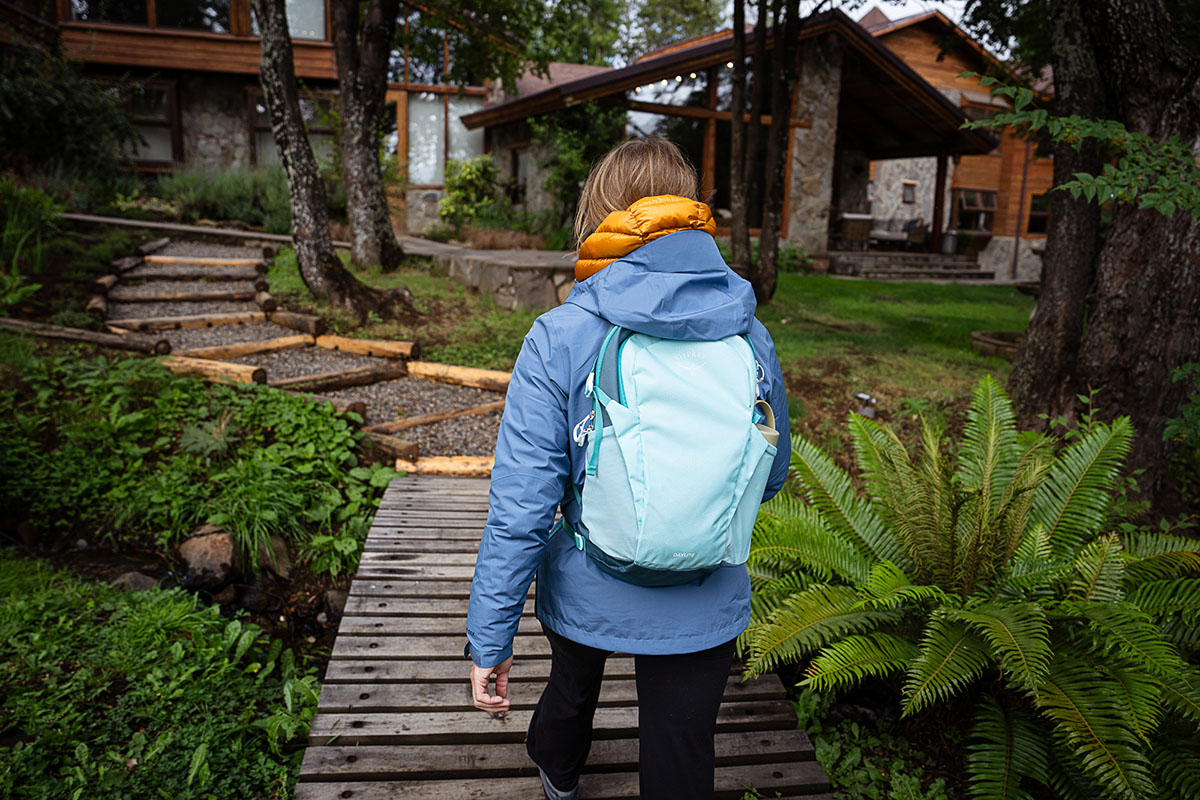
In terms of breathability, the Aspire II is a mixed bag. Like most 2-layer rain jackets, the Aspire’s shell fabric has a tendency to trap warmth and grow clammy, which has been especially noticeable while hiking uphill in mild temperatures. But the jacket’s saving grace is its full-length side vents—dubbed TorsoFlo—that extend from bicep to hem. The vents’ two-way zippers allow you to open the jacket at the hem like a poncho or use the upper zipper to create a standard pit zip. It’s true that TorsoFlo is a bit of a polarizing feature (not everyone loves a poncho), but you won’t find a more ventilated 2-layer design. Added up, the Aspire II is an incredibly practical rain jacket for those who tend to build heat. Still, stepping up to a 3-layer design (like the Patagonia Torrentshell 3L or premium Arc’teryx Beta) will get you better overall breathability.
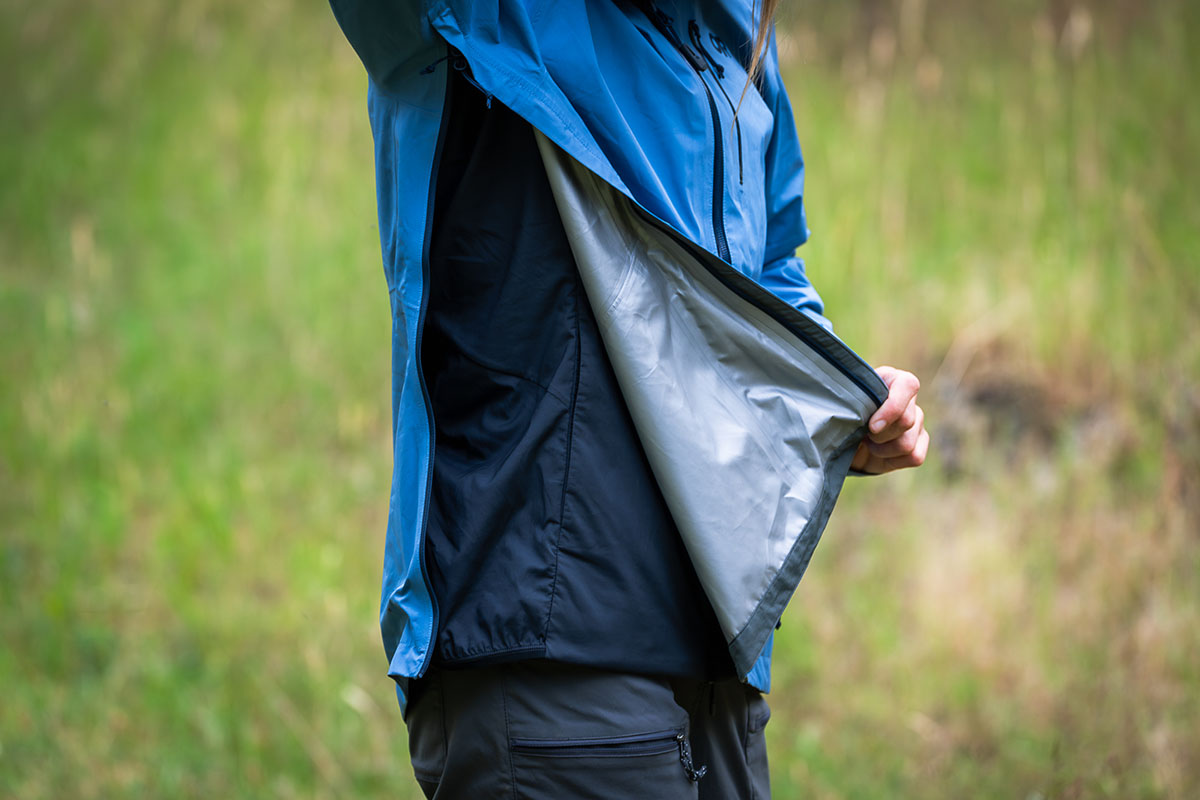
Rain jackets often give off plasticky vibes, but not the premium Aspire II. In short, this is one of the more comfortable shells we’ve worn: The supple polyester face fabric is relatively quiet and unrestrictive during activity, and the interior has a premium feel more akin to a hardshell than a laminated rain jacket. To be sure, the Aspire’s unlined interior does have some downsides—including clamminess during high-output use and a bit of a rubbery feel in general—but they’re far from dealbreakers and only truly noticeable when wearing the jacket over bare arms. As a final touch, OR included a soft fleece-like material where the face meets the collar, which offers an extra dose of coziness when fully zipped.
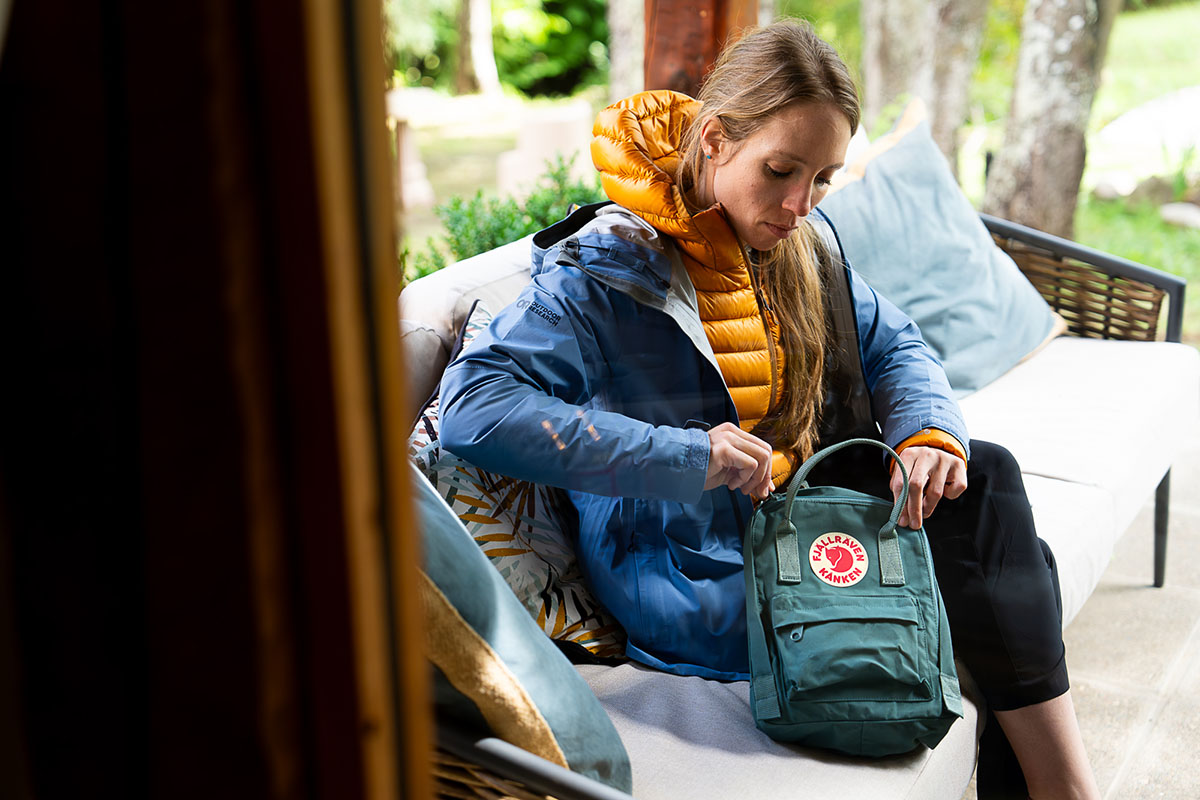
With a listed weight of 11.7 ounces, the Aspire II falls about mid-pack among the women’s rain jacket competition. For reference, it’s lighter than similarly intentioned designs like the Marmot Minimalist (13 oz.) and Patagonia Torrentshell 3L (12.4 oz.), which makes it a slightly better choice for human-powered activities like backpacking and backcountry skiing. You can shave some weight with a true ultralight piece like OR’s own Helium Rain Jacket (6.3 oz.) but expect notable sacrifices in features, protection, and durability. In other words, the Aspire II strikes a really nice balance with its lightweight yet fairly uncompromised build.
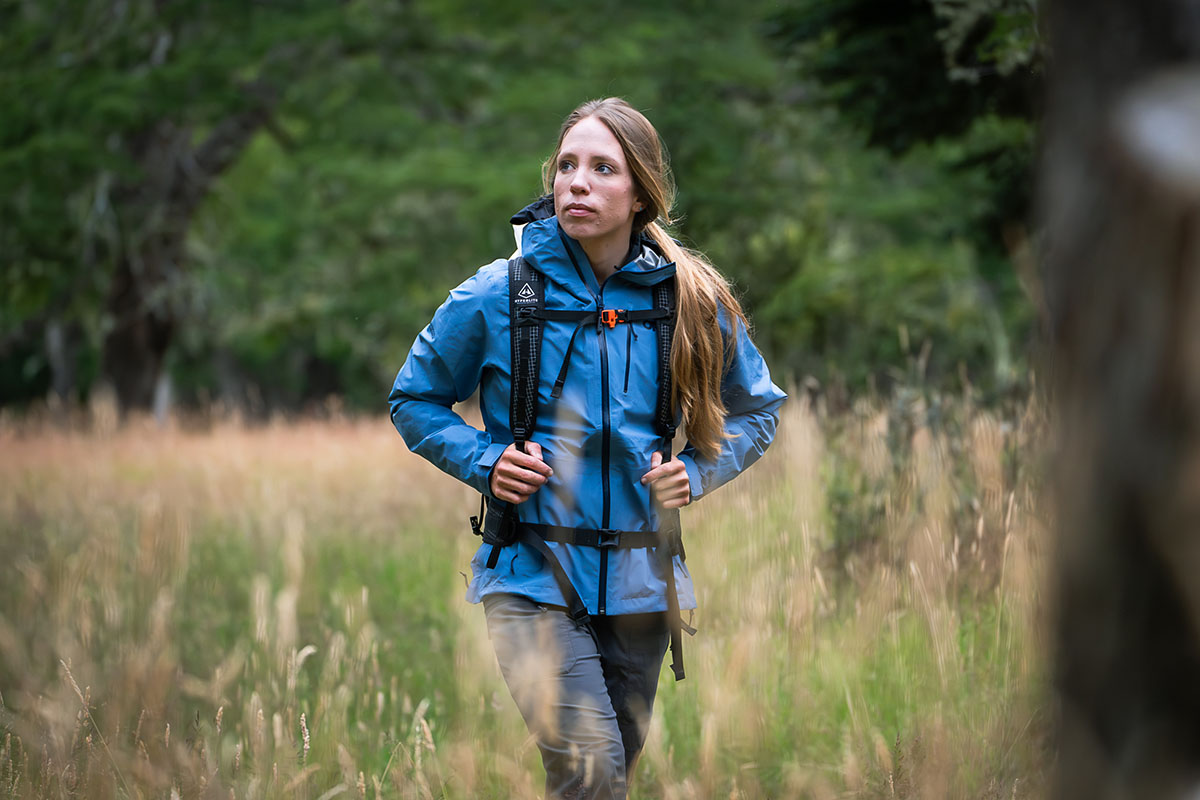
Packability is also impressive: The Aspire rolls easily into its hood and compresses to the size of a large burrito—we had no issue fitting it into our daypack or overnight pack. For those who prefer to stuff their rain jacket into a hand pocket, the Aspire fits just fine, but it’s a pain to secure without a two-sided zipper. All told, there are certainly more compressible rain jackets available, and some will prefer a design that’s made to pack up and hang from a harness, but the Aspire hits a sweet spot for most.
Outdoor Research doesn’t always knock it out of the park with their build quality, but the Aspire II GTX Jacket is a very premium and well-made design. The supple fabrics and Gore-Tex Paclite membrane offer a refined fit and finish (more reminiscent of a hardshell than a rain jacket), and all the details are well executed: The stitched seams along the outside of the jacket are well made and show no signs of fraying, the seam taping on the interior is in great shape, and the zippers operate with ease. Further, you get a lot of toughness by way of the 50D polyester shell (most alternatives are 40D or thinner), which has held up well to rough use with no significant signs of wear. All told, while the Aspire II can’t match the hardwearing nature of a burly 3-layer hardshell, it feels noticeably more robust than most lightweight rain jackets.
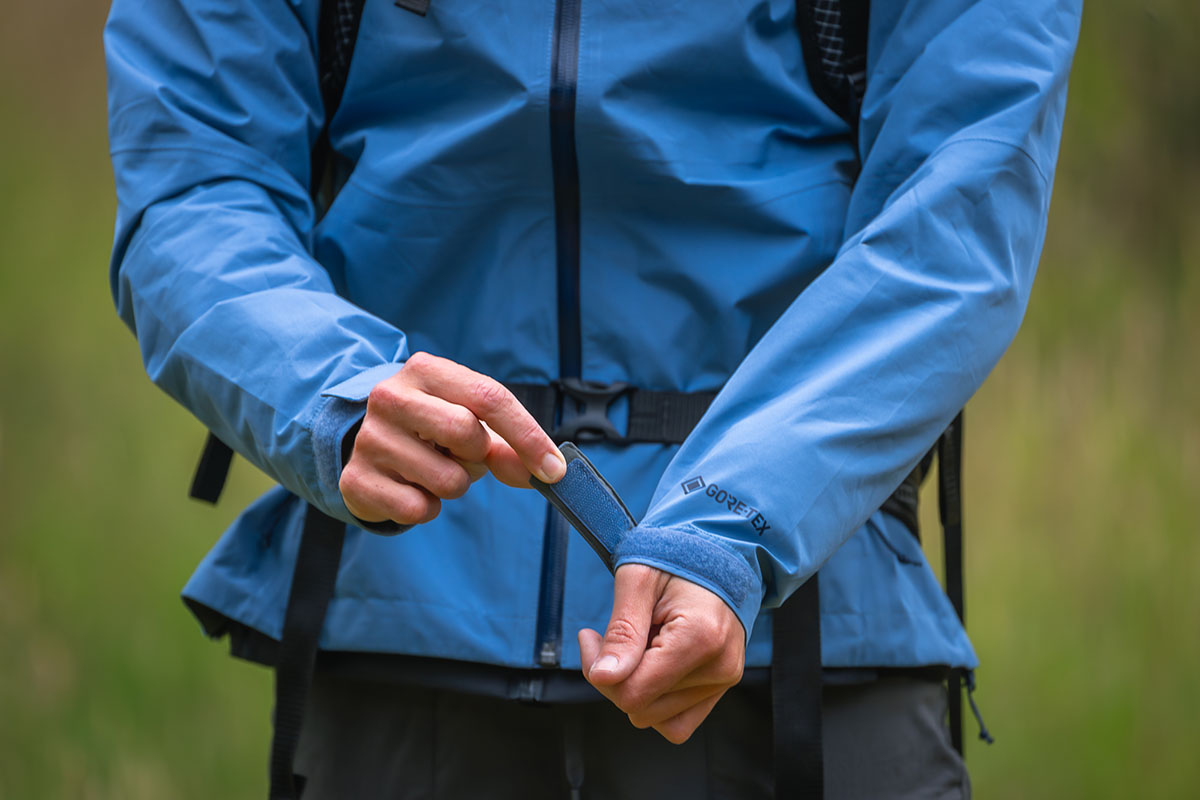
As we touched on above, the Aspire II’s full-length TorsoFlo side zippers are a clear selling point of the design. These run from hem to bicep and feature a two-way zip for maximum versatility: Zip up from the hem for poncho-like protection (you can place the front flap over your backpack’s hipbelt) or undo a section under the arms for standard pit zip-like venting. No matter how you use the TorsoFlo system, the result is complete core venting without sacrificing all-around waterproofing and coverage.
Despite the class-leading ventilation, the Aspire II’s TorsoFlo vents do have some quirks and potential downsides. Because the vents extend all the way through the hem, there’s no way to achieve one continuous hem adjustment—OR’s compromise was to place a drawcord cinch on the back half of the jacket, which results in a slightly uneven look (the front is smooth while the back is bunched up). It’s not a dealbreaker, but we have been aware of the slightly awkward fit. And from a styling perspective, the storm flap and exposed zipper pulls at each hip give the Aspire a little more of a technical look than everyday-friendly designs like the Patagonia Torrentshell 3L.
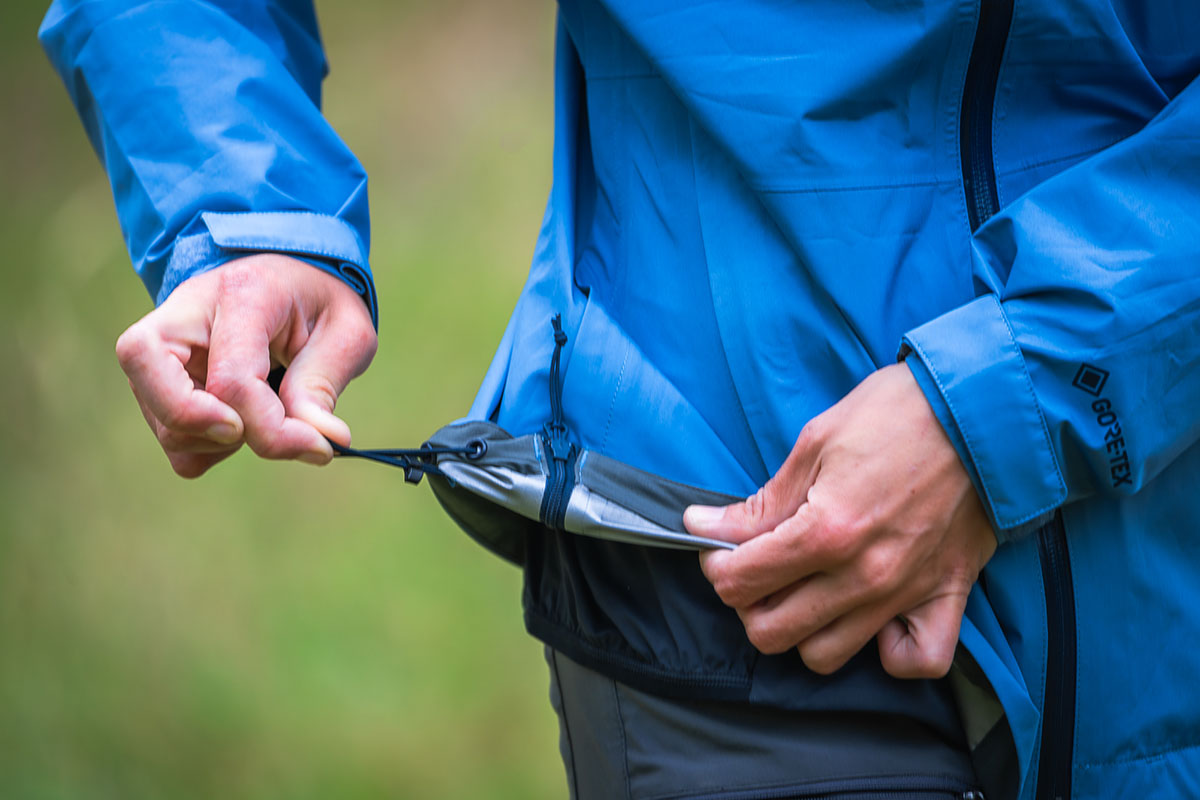
OR hoods have been hit or miss for us in the past, but the latest Aspire II is a solid all-around effort. The toggle at the back of the hood is easy to pinch, and you get two additional adjustment points at the front (inside the collar) for fine-tuning fit. It’s also generously sized and slides easily over a beanie, ball cap, or even a climbing helmet (although it won’t fit over a bulkier downhill ski helmet). The Aspire also incorporates a tall collar and semi-rigid bill at the front, which translates to great coverage for rough and rowdy weather. Added up, the hood design matches the rest of the jacket as highly practical for three-season use.
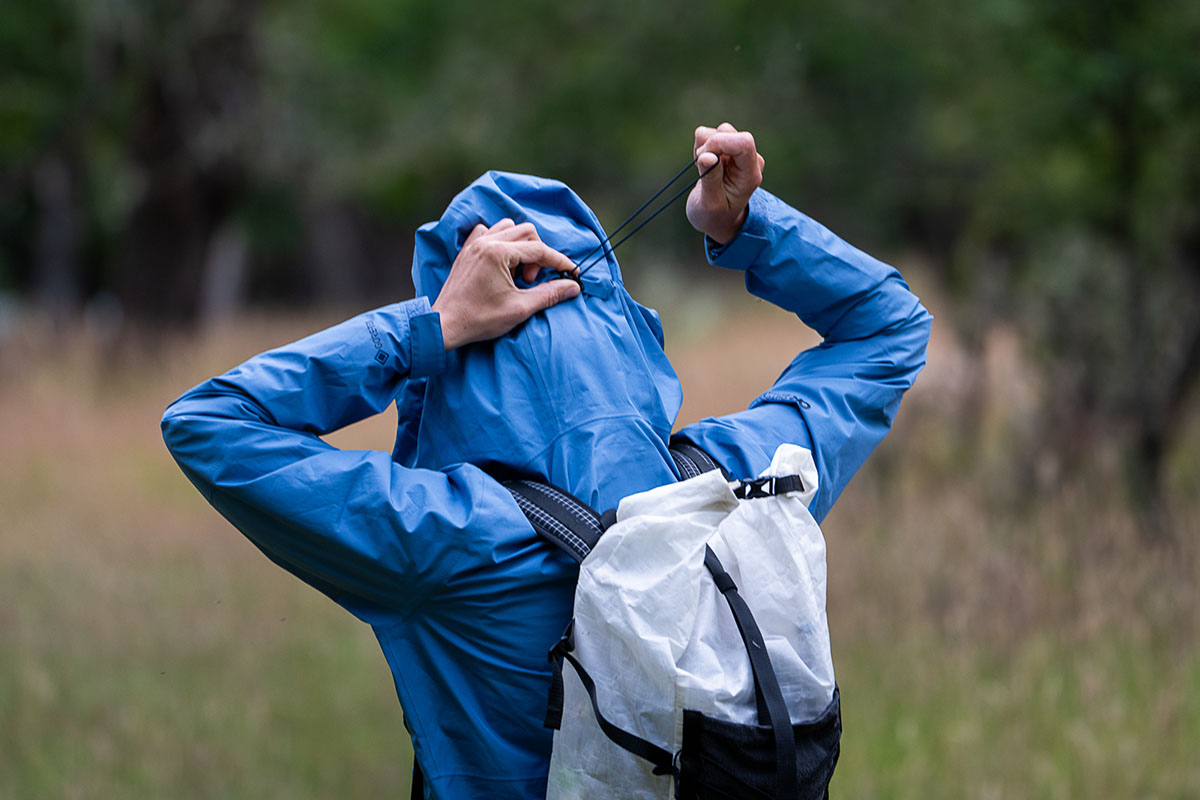
The Aspire II boasts three total pockets for divvying up the essentials. The chest pocket is easy to locate with its exposed YKK Aquaguard zipper and is big enough to accommodate bulkier items like a smartphone or Garmin inReach Mini. In lieu of water-resistant zippers, the hand pockets have storm flaps for protection and easily swallow a pair of gloves or snacks. There’s also a key clip inside the left hand pocket. It’s worth noting that the Aspire’s hand pockets aren’t positioned high enough to clear a climbing harness or backpack hipbelt, which is a little surprising given the jacket’s performance slant. This renders them fairly difficult to access during activities like hiking, climbing, and skiing, but the advantage is that they’re at a natural height when you’re wearing the jacket around town or without a pack.
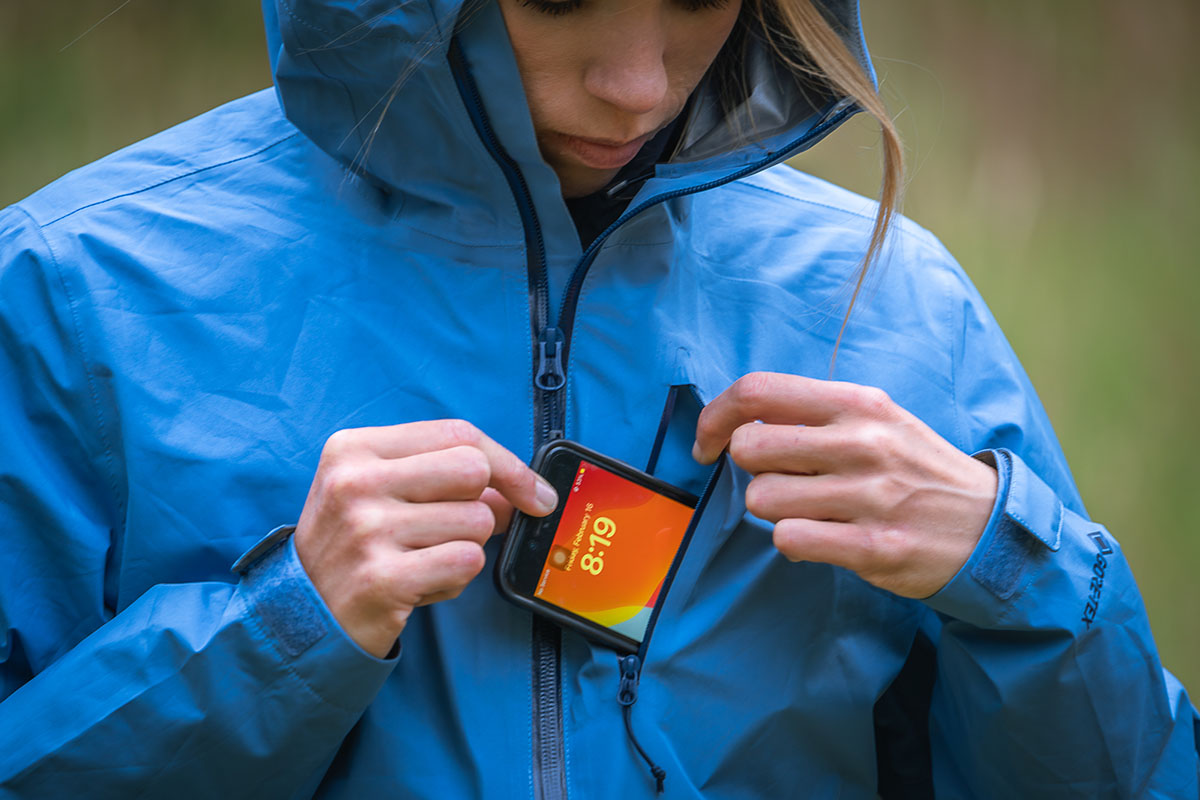
Unfortunately, I was underwhelmed by the Aspire II’s fit. While the past-generation model was trim and sleek (great for active use), the latest design is decidedly boxy, with a noticeable amount of room in the midsection. To be fair, the arm and hem lengths were spot-on for me in my standard size small (for reference, I’m 5’6” and 135 lb.), overall mobility was good, and the roomy fit made it easy to layer heavily underneath. It’s also worth noting that Outdoor Research offers the jacket in nine sizes (from XS to 4X), which is more than most competitors. But if you prioritize a trim fit for performance use, I’d recommend opting for a sleeker design like Arc’teryx’s Beta Lightweight.
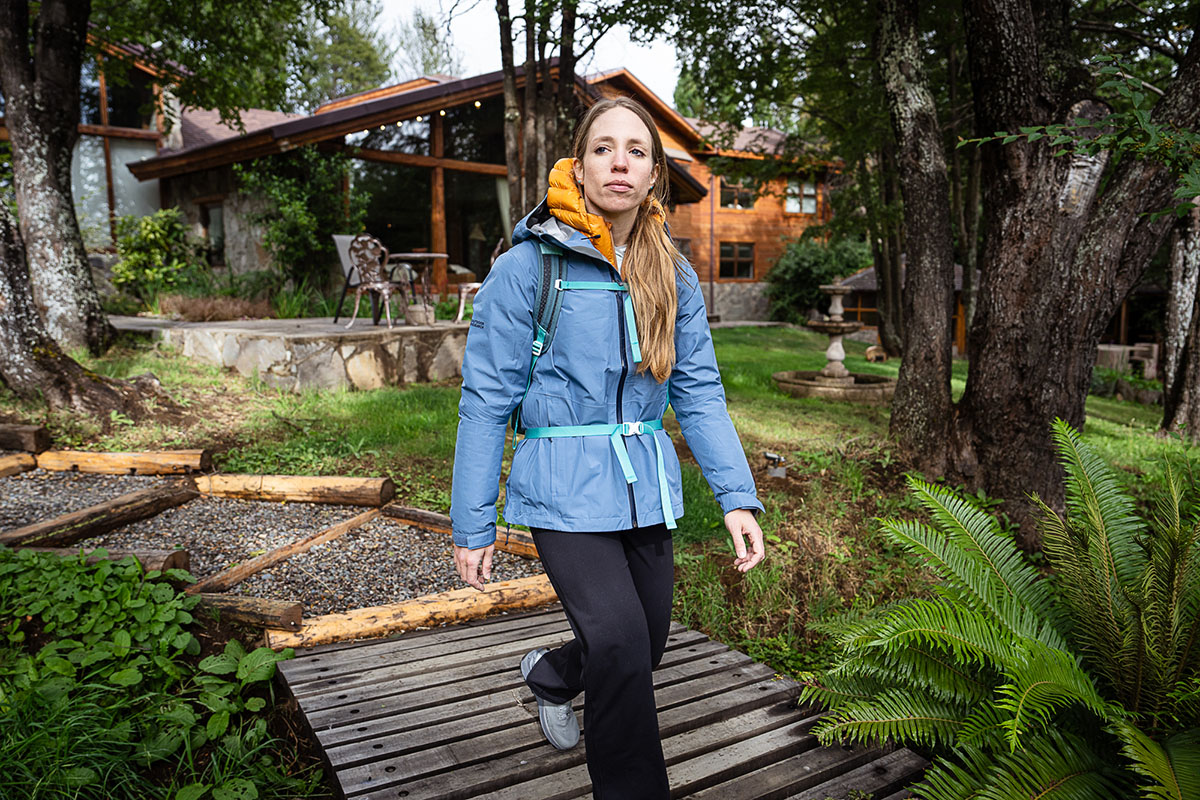
Many outdoor brands have put a big emphasis on sustainable practices of late, including Outdoor Research. In this case, the Aspire II GTX Jacket uses bluesign-approved Gore-Tex, which indicates that it meets strict chemical safety requirements and has been deemed safe for consumers, workers, and the environment. We wish OR had included recycled materials and/or a more eco-friendly PFC-free DWR coating—perfluorocarbons are known as "forever chemicals" due to their inability to break down over time—but we nevertheless appreciate the brand's ongoing efforts to improve their line.
In addition to the women’s Aspire II GTX Jacket tested here, Outdoor Research also makes the women’s Aspire Trench ($249), which features the same 2-layer construction alongside a 36-inch center back length and a number of stylish touches. On the men’s side, the Foray II GTX Jacket costs the same as the Aspire and retains a nearly identical build and feature set, including a 2-layer Gore-Tex Paclite membrane, 50D shell, and signature TorsoFlo vents. The only major differences are weight and colorways, with the Foray clocking in at 11.9 ounces (for more, see our in-depth Foray II GTX review). OR also offers the Aspire and Foray Gore-Tex Pants, which retail for $180, use the same 2-layer construction, and check in at 9.8 and 12.1 ounces, respectively. Finally, as we touched on above, OR recently released 3-layer versions of both the Aspire and Foray, which use the brand's in-house AscentShell membrane and are designed to be more breathable than their 2-layer counterparts.
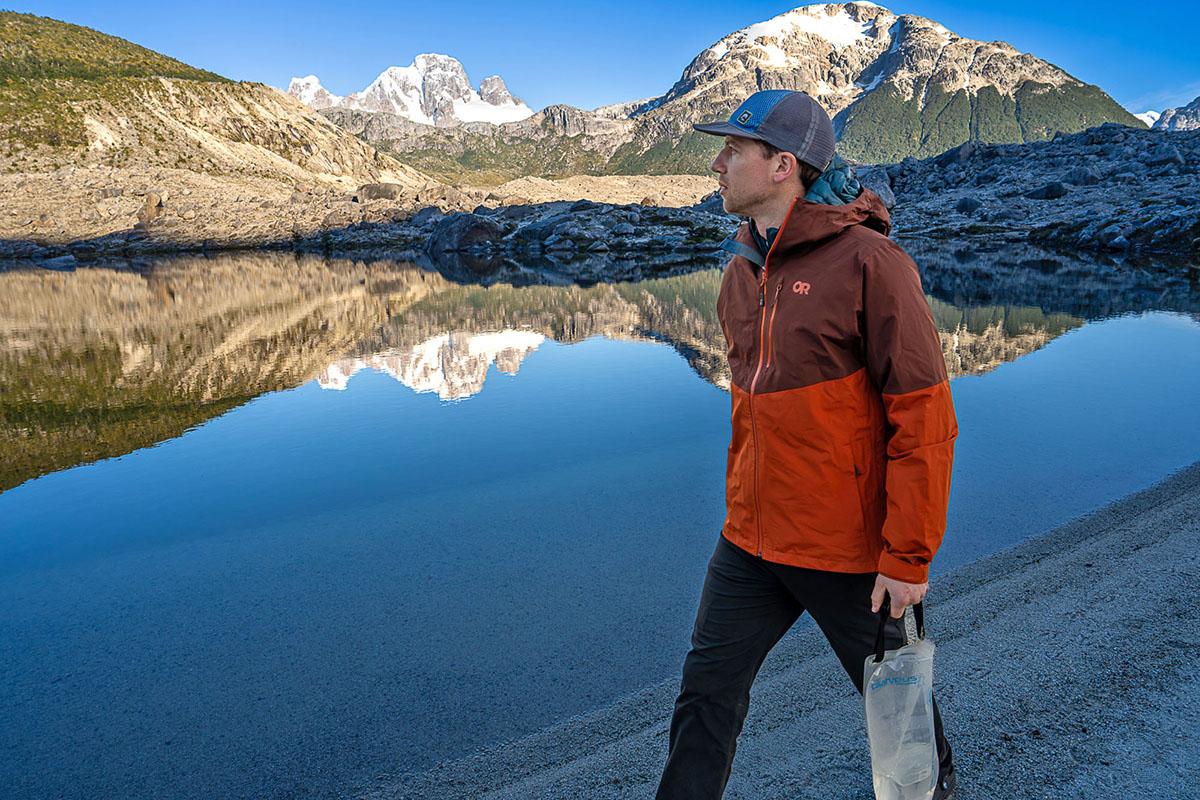
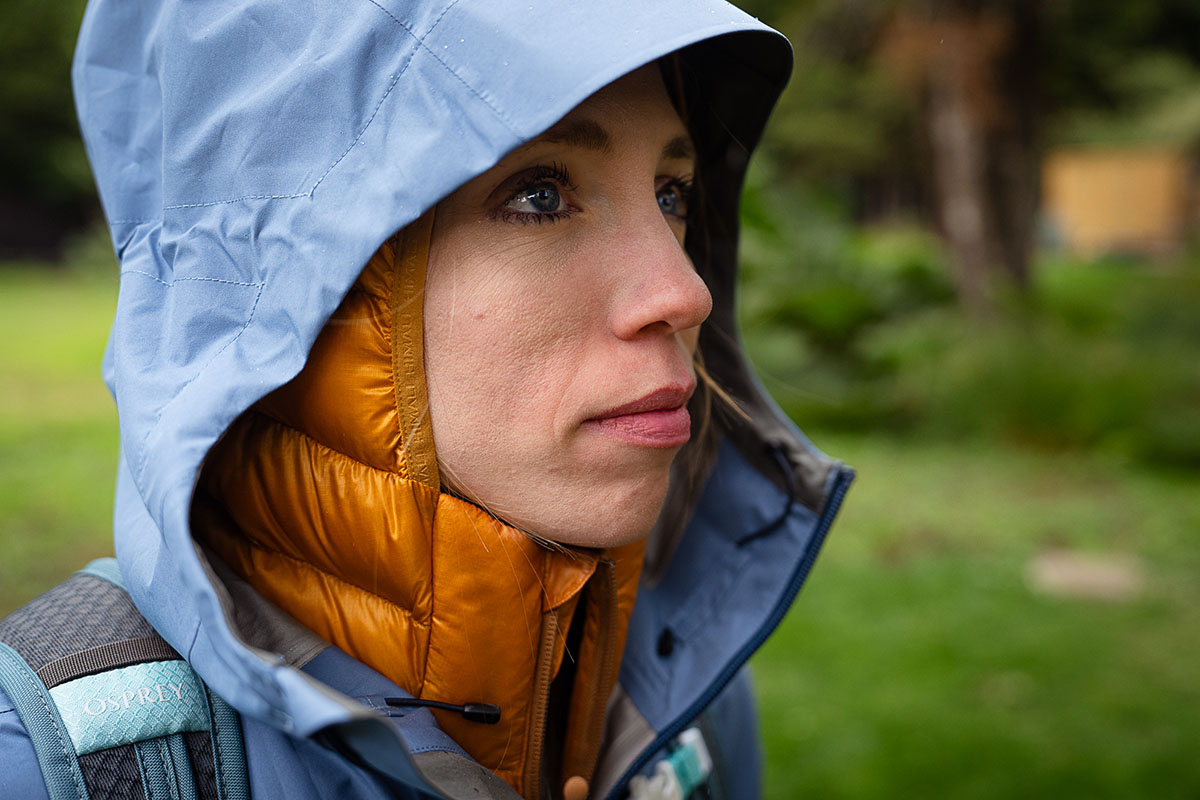
| Jacket | Price | Weight | Category | Waterproof | Shell | Pit Zips |
|---|---|---|---|---|---|---|
| Outdoor Research Aspire II GTX | $225 | 11.7 oz. | Hiking/daily use | 2L Gore-Tex | 50D | Yes |
| Marmot Minimalist | $220 | 13.0 oz. | Daily use/hiking | 2.5L Gore-Tex | Unavail. | Yes |
| Arc'teryx Beta Jacket | $400 | 10.6 oz. | Hiking/daily use | 3L Gore-Tex | 80D | No |
| ORh Stratoburst Stretch | $165 | 8.5 oz. | Hiking/daily use | 2.5L Ventia | 50D | Yes |
| Patagonia Torrentshell 3L | $179 | 12.4 oz. | Daily use/hiking | 3L H2No | 50D | Yes |
The Outdoor Research Aspire II is a premium women's rain jacket that’s fully serviceable for three-season use, but there’s no shortage of other options to consider. Another one of our longtime favorites is Marmot’s Minimalist, which also uses Gore-Tex Paclite (2.5L) for protection. In parsing out the differences, the Minimalist is slightly heavier than the Aspire at 13 ounces but has a similarly premium look and feel, along with functional features like a substantial hood and an interior lining that’s less plasticky than many competitors. That said, for just $5 more, the Aspire tacks on a water-resistant main zipper and the hem-to-bicep vents that we love (the Minimalist has standard pit zips). The Marmot is the more everyday-friendly option, but the OR offers a step up in performance and refinement at a slightly lower weight and cost.
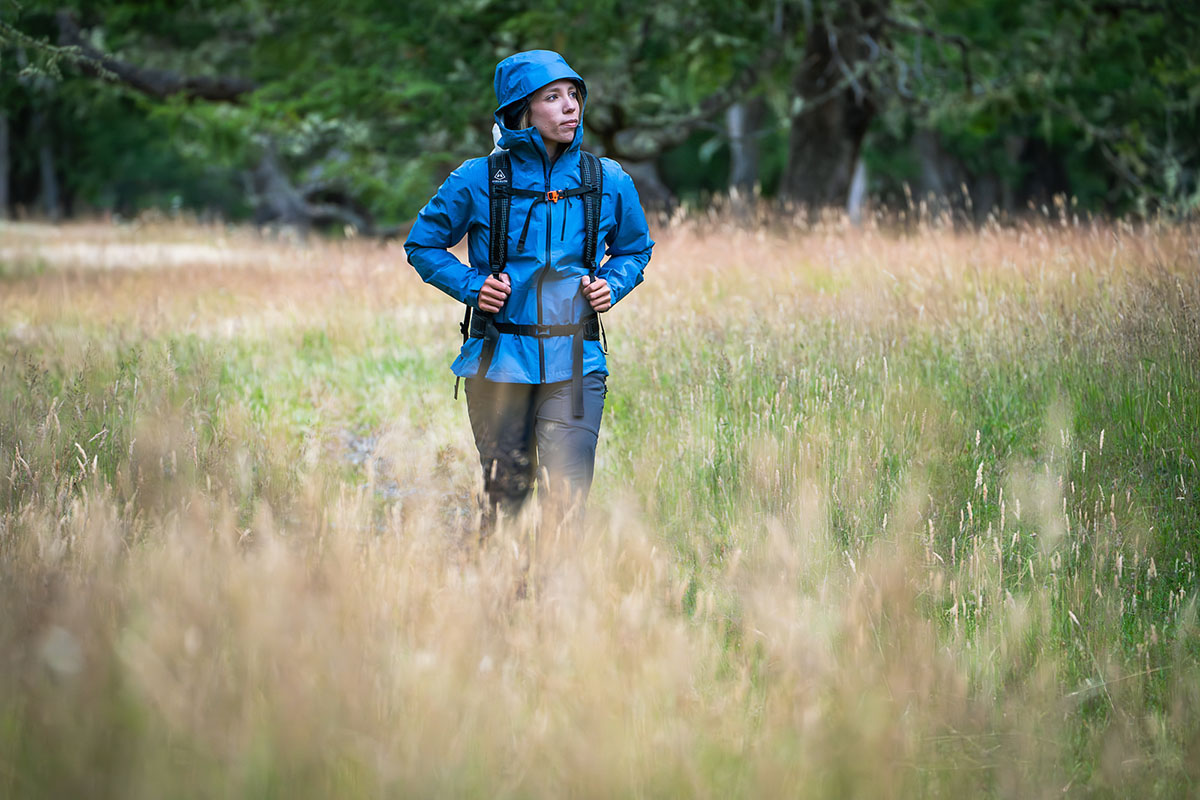
British Columbia-based Arc’teryx is known for their waterproof shells, and the Beta Jacket is their design for hiking and everyday use. In comparing the two, the Beta has a 3-layer Gore-Tex construction—compared to the 2-layer Aspire—and its softer interior (which uses Gore’s C-Knit backer) breathes better and feels less clammy against bare skin. Arc’teryx also recently boosted durability by increasing the Beta’s shell thickness from 30D to a whopping 80D. But despite the increased protection and durability at a lower (10.6 oz.) weight, the Arc’teryx’s lack of pit zips and helmet-compatible hood is a notable downgrade from the Aspire and makes it tough to recommend for high-output or three-season use. All told, the Beta has a higher-end feel and is arguably a better pick for casual activities, but the Aspire II will save you a whopping $175 and tacks on a number of performance features.
Next up is an in-house alternative to consider: OR's Stratoburst Stretch Jacket. For a considerable $60 less than the Aspire II, the Stratoburst checks in lighter at 8.5 ounces, packs down smaller for stuffing in a full pack, and incorporates stretch into the fabric for unrestricted mobility. The feature set is also well executed, although the Aspire's TorsoFlo vents are bigger than the Stratoburst's standard pit zips, and storage is more limited with just two hand pockets (although one doubles as the stuff sack, which we appreciate). The Aspire also features additional adjustability at the hood, which makes it easier to fine-tune fit, and its 2-layer Gore-Tex construction is a notable step up in quality and reliability compared to the Stratoburst's 2.5-layer Ventia membrane. In the end, the Aspire's performance advantages give it the overall edge for us, but the Stratoburst will save you a good chunk of cash and meet the needs of most casual users.

Last but not least is the Patagonia Torrentshell 3L, which is our top-ranked rain jacket for a few years running. An everyday front-country shell that can hold its own on the trail, the Torrentshell features premium 3-layer construction (using Patagonia’s in-house H2No Performance Standard membrane), a durable 50D shell, and helpful features like pit zips, a two-way adjustable hood that rolls down for storage, and a stuff pocket with an integrated carabiner loop. And at just $179, it’s significantly cheaper than much of the competition without sacrificing much in the way of quality. But the Torrentshell does lack the performance slant of the Aspire II: The center front zip features a bulky flap rather than the OR’s water-resistant design, and the hood is not large enough to accommodate most helmets. We’ll stick with the Aspire for longer and more serious trips into the backcountry, but for casual day hikes and the odd overnight, the Torrentshell gets the job done for almost $50 less (for more, read our in-depth women's Torrentshell review).